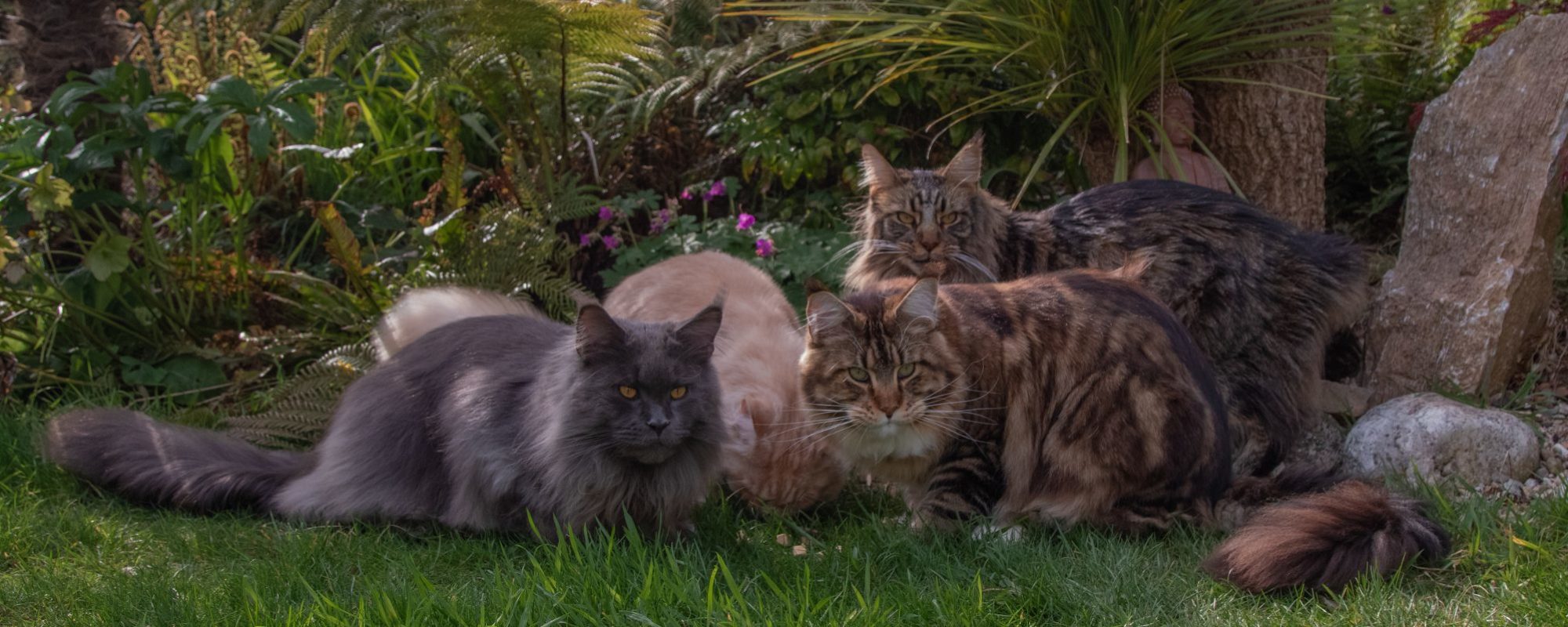The Maine Coon, as the name implies, originates from the State of Maine, where the breed was known as a popular mouser and farm cat. Maine Coons are a natural breed, however very little is known about their origins. One possibility is that the Vikings brought longhaired European forest cats to North America that interbred with local cats. Another theory is that they are the descendants of long-haired cats belonging to Marie Antoinette, sent to America. Most likely, sea farers brought European longhaired cats on their ships that then mated with local shorthaired cats. This is where Darwin’s theory of survival of the fittest comes into play and only the best of the breed survived, mating to produce a hardy animal, capable of living in a cold harsh climate.
The Maine Coon was originally the American wild cat, living mainly on farms where it was held in high esteem by farmers for its ability to catch vermin. Maine Coons have all the points of a typical hunter: large eyes and ears, essential for detecting prey, and a big, muscular body for catching them. Having to survive in cold climate, it has a long silky and shaggy coat, short over the head, becoming longer down the back, stomach, legs and ruff. The shaggy coat helps to protect these cats from rain, snow and wind. It is extremely hard to get a Maine Coon really soaked with water as their fur is so dense and water repellent! Their legs are very long, sturdy and powerful. Their paws are large and tufted underneath with fur, which acts like snowshoes to be able to walk on snow. Another important trait of Maine Coons is their impressive, and body long tail that these cats use to wrap around them for further insulation. Maine Coons are also large cats, males typically weighing between 7-12kg They don’t reach their full size until they are three to five years old.
One of the first Maine Coons to win the best overall cat was a female Maine Coon called Cosie at a show in Madison Square Garden in 1895. Around that time, Maine Coons were very popular exhibits at cat shows. But the invasion of glamourous Persian and exotic Siamese pedigree cats from England around the turn of the century spelled the end of the Maine Coon’s popularity for about five decades. However, it began to make a comeback in the 1950’s. Gradually the Maine Coon became accepted by all the American associations, and in 1976 it finally obtained full Championship Status with the CFA. In the mid 1980’s it began its influx into Europe.
Maine Coons are extremely good-natured cats that adapt well to many lifestyles. They like being with people and have the habit of following them around, but they aren’t needy. They are not the typical lap cat, but they do like to be near their humans. They are also very smart and will happily learn tricks or play with toys that challenge their brain. Maine Coons usually enjoy playing well into adulthood. Males, especially, are prone to silly behaviour. They are not especially loud cats, they however, make any requests in a soft chirp.
